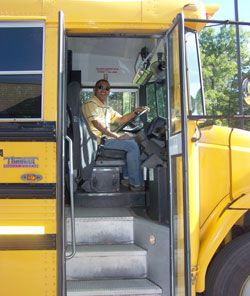10 High-Paying Jobs in Canada Without a Degree
Advertisement
4. Transit Drivers
A transit driver is a professional responsible for operating various types of public transportation vehicles to transport passengers along scheduled routes. They ensure the safety of passengers, collect fares, announce stops, and adhere to traffic laws and schedules. Their commitment to providing reliable and courteous service contributes to the overall functionality of public transportation systems. Requirements may vary by province, but generally, they need a valid driver’s license, good driving record, and may undergo specialized training. Annual salary ranges from $36,000 to $68,000 per year and can vary based on experience, location, and the transit agency.

Role Of a Transit Driver
- Vehicle Operation: Transit drivers operate buses, trolleys, streetcars, or other public transportation vehicles along designated routes.
- Passenger Assistance: Transit drivers assist passengers with boarding and disembarking from the vehicle, including those with disabilities or special needs.
- Safety and Security: Transit drivers prioritize the safety of passengers and other road users. They also monitor security concerns and report any incidents to the appropriate authorities.
- Route Adherence: Transit drivers follow predetermined schedules and routes, making regular stops at designated locations to pick up and drop off passengers.
- Vehicle Maintenance: Transit drivers conduct pre-trip and post-trip inspections of their vehicles to ensure that they are in good working condition. They report any mechanical issues or maintenance needs to maintenance personnel.
- Customer Service: Transit drivers interact with passengers in a professional and courteous manner, addressing inquiries, providing directions, and maintaining a positive and respectful environment on board.
- Emergency Response: In the event of accidents, vehicle breakdowns, or medical emergencies, transit drivers are trained to respond appropriately and may need to provide assistance to passengers until emergency services arrive.